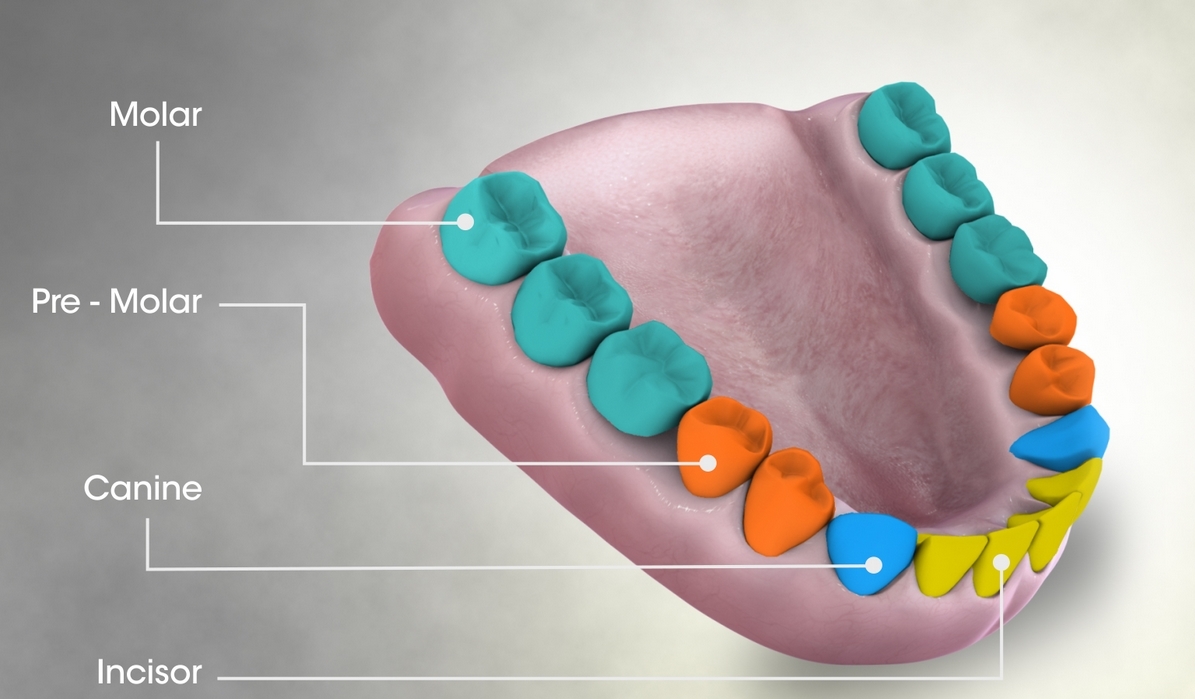Human Teeth have evolved to break down both meat and vegetable. Our teeth include incisors, canines, premolars, and molars, with each category used to chew specific types of food.
Humans and other mammals develop baby teeth first, and then in later life develop 20 primary teeth. Dental anatomy is a field dedicated to the study of tooth structure. The teeth are classified by appearance, among other things.
Humans usually have 20 primary teeth and 32 adult teeth. The study of naming the teeth is called taxonomic science. The crown of a tooth is the area covered in enamel above the cementoenamel junction (CEJ or neck of the tooth), and is mostly composed of dentin (dentine in British English) with a pulp chamber inside.
The anatomic root is found below the CEJ and is covered in cementum. Dentin composes most of the root, normally or pulp canals. (1)
Roots:
Canines and most premolars, except the maxillary usually have one root. Maxillary first premolars and mandibular molars usually have two roots. Some teeth may have multiple roots called supernumerary roots.
Systems to Identify Teeth:
There are three systems used to identify teeth. The most common is the FDI World Dental Federation Notation. This is the most common notation and is adopted by the World Health Organization (WHO).
The second method is the Universal Numbering System. This system numbers teeth from 1 to 32 and is primarily used in the United States.
The third method is Palmer system used in Great Britain. The Palmer system was developed by a dentist in the 1800s and uses roman numerals from the midline.
(1) Cate, A. R. Ten (1998). Oral Histology: development, structure, and function (5th ed.). Mosby. ISBN 978-0815129523.

